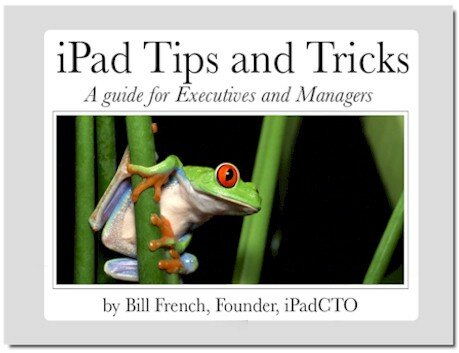I frequently ask people why they think iPad is such a success. Without even pausing, most answer by mentioning a specific app. Some discuss the hardware features such as battery life, or portability. Many describe the ease of use as a key success attribute. But few regard apps plus the device as a delicate blend of two very different origins that [unwittingly] conspire to create an unforgettable experience. As I once wrote…
“When an iPad app is launched, a transitive process occurs, taking the user on a journey far away from the device and deep into an experience that is focused like a laser on the subject intended by the application designer. iPad performs this process magically and no other device has achieved this mood swinging process more elegantly. The device quickly falls away from your consciousness and in its place emerges an experience.”
iPad is successful because of a very simple idea – the threshold effect.
When you first hold an iPad, you cross a threshold. The device seems sturdy, simple, elegantly approachable even for non-technical people. When you launch an app, you cross another threshold; the device melts away and the app experience becomes the focal point. Some apps change your mood in profound ways; others do little to influence how you feel.
A very small percentage of apps leverage the threshold effect that the iPad device initiates. The ones that do, have a much better chance at success. It seems that for every ten thousand apps that make it into the App Store, one emerges as a mega hit. I’m not sure this is the exact ratio, but you get my point. I further suspect that there’s a strong correlation (perhaps a causal relationship) between wildly successful apps and the threshold effect.
Failing Faster and faster
By all accounts, especially those in the accounting field, the app eco-system is a massive failure when taken in the aggregate. A very small percentage of apps are experiencing sustained growth and repeated use. The average iPhone user has about seventy apps installed, but uses fewer than ten on a regular basis. I don’t know what the numbers are for iPad, but my own experience tells me it’s about the same.
The app market model, whether accidental or planned, encourages failures because the hurdles are not excessively high nor are the risks excessively great. The natural climate of apps has paved the way for a generation of developers to see what sticks and to experiment with ideas.
The app market is much like nature; it continually roles out replication errors as cells divide. Occasionally (almost infinitesimal), the errors are well received into the environment, thus triggering a generation of new cells imprinted with the “error”. But the error, it turns out, is exactly what thrives in nature. Without tens of thousands of failures from the app-ecosystem, it’s unlikely that the dozens or hundreds of superbly crafted apps would exist.




















Here’s a similar take…
Apple’s “Blank Screen” Strategy – http://bit.ly/iiupF6 <– Their key advantage. It's not the hardware, it's what's behind that screen.
Thanks, good article. The comments are even better. ;-)
Depends on your definition of failure. No, not every app makes $1 million, but the app store grossed $1.7 billion in revenue last year. And because the threshold is so low many people who would have never before been able to enter the dev field now have a realistic chance to become developers. Their first app might not be a success, but it might help them create a second app that is a success or help them get a job to build a custom app for third party that pays the bills for a couple months even if that app is not a “success.”
Precisely. Tens of thousands of little attempts in an evolutionary process; each step probing the boundaries for potential success.